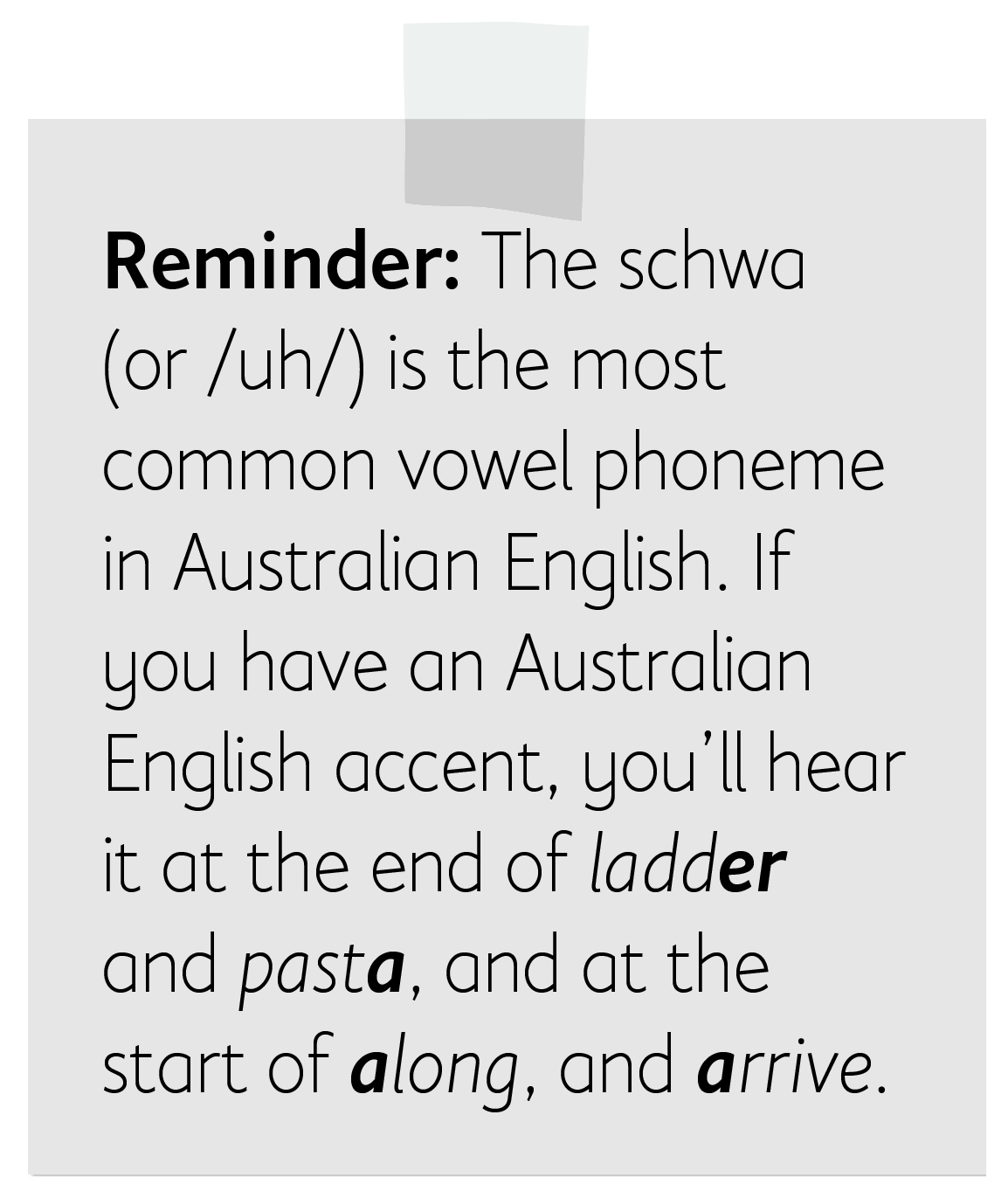Articles & Videos
How pronunciation influences segmenting
Categories
Subscribe to our newsletters
Receive teaching resources and tips, exclusive special offers, useful product information and more!
How pronunciation influences segmenting
Sound Waves Literacy 24/2/20

Some words have more than one widely accepted pronunciation in Standard Australian English. This won’t affect communication but may affect how your students segment words during spelling lessons.
For example, do you say often with /t/ or without? Your answer to that question will determine the number and type of graphemes (letters) you end up with when you segment the word.
Variation in pronunciation commonly occurs when either a consonant phoneme or a schwa is dropped from a word, resulting in different – but equally correct – segmented answers. Let’s look at some common examples of alternative pronunciations, how they affect segmenting and how to discuss this topic with your students.
Dropping consonant phonemes
Some people drop the ![]() in often:
in often:
![]() segmented into 5 sounds, contains
segmented into 5 sounds, contains ![]()
![]() segmented into 4 sounds, does not contain
segmented into 4 sounds, does not contain ![]() , ft represents
, ft represents ![]()
Some people drop the ![]() in empty:
in empty:
![]() segmented into 5 sounds, contains
segmented into 5 sounds, contains ![]()
![]() segmented into 4 sounds, does not contain
segmented into 4 sounds, does not contain ![]() , pt represents
, pt represents ![]()
In each case, the 4- and 5-sound segmented versions are both correct. Neither is more ‘right’ than the other.
Dropping the schwa
 Do you say family as famuhly or famlee? The latter has one less sound than the former and, as a result, there are two ways to segment the word:
Do you say family as famuhly or famlee? The latter has one less sound than the former and, as a result, there are two ways to segment the word:
![]() where i represents
where i represents ![]() , l represents
, l represents ![]()
![]() where il represents
where il represents ![]()
The same effect is seen in history:
![]() where o represents
where o represents ![]()
![]() where or represents
where or represents ![]()
and camera:
![]() where e represents
where e represents ![]()
![]() where me represents
where me represents ![]()
Things to keep in mind
Many words with alternative pronunciations do not result in different segmented answers. For example, whether you say zebra with the second sound as ![]() or
or ![]() , the word appears the same when segmented:
, the word appears the same when segmented:
![]() where e represents
where e represents ![]() or
or ![]()
It’s the same with dance:
![]() where a represents
where a represents ![]() or
or ![]()
The alternatives above are perfectly acceptable, however, true mispronunciations, such as lie berry for library, or pitcher for picture, should be identified and discussed before students attempt to segment words.
There are many varieties of English spoken within Australia, resulting in variations in acceptable pronunciation beyond what is listed as ‘correct’ in dictionaries. These variations are strongly tied to student identity, so any conversations regarding pronunciation should be approached from the perspective of identifying and celebrating language diversity.
How to discuss pronunciation and segmenting with students
Don’t just brush past pronunciation differences. Instead, embrace them as an opportunity for class discussion. First, be prepared. As part of your planning for the unit ahead, check out the Segmented Answers in the Sound Waves Literacy online teaching resources. These include multiple segmented answers for words with more than one common pronunciation.
Next, communicate with your students. It’s important to explain to students that, even when there is more than one way to pronounce a word, the word must be spelled correctly. As students engage in these types of discussions, they consolidate their spelling skills, which is the ultimate aim of practising segmenting.
Finally, don’t panic if one student segments a word differently to another due to differences in pronunciation. The critical tasks for students are to:
- say the word without mispronunciation
- assign logical grapheme choices to represent sounds
- correctly spell the word.
Learning to segment words with alternative pronunciations is an invaluable experience for your students, and will help foster their interest in finding out how words ‘work’.